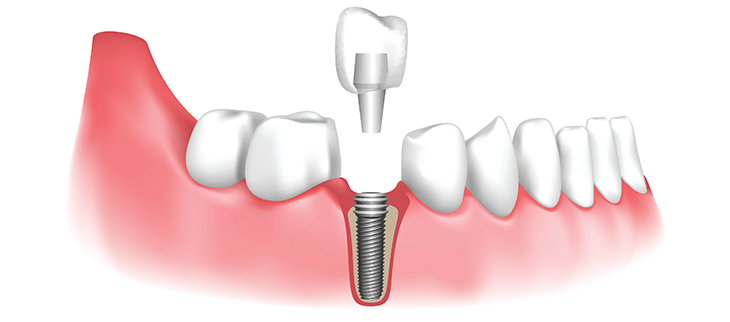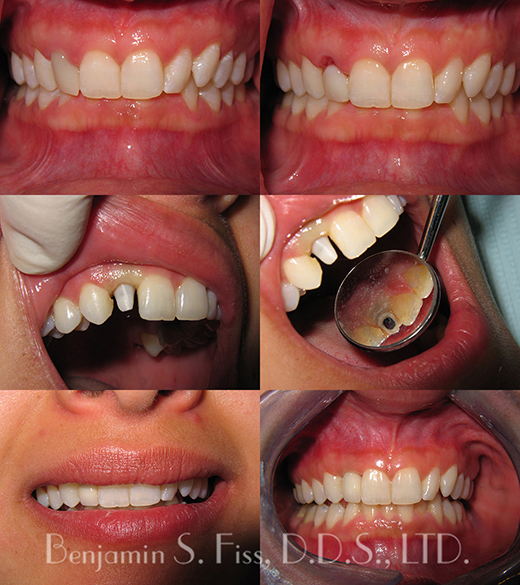Mono Implants Columbus OH Dental Implant Benefits
Mono Implants Columbus OH Dental Implant Benefits
Blog Article
Dental Care Associate Condit OH Dental Implant Surgery
Dental implants have revolutionized restorative dentistry, providing a reliable alternative to conventional methods for changing missing teeth. The integration of dental implants with the jawbone is a official site complex biological course of generally identified as osseointegration. This process not solely anchors click here now the implant securely but additionally helps keep jawbone health, stopping the bone loss typically associated with discover this info here missing teeth.
The dental implant itself is usually made of titanium, a biocompatible material that the body accepts. When an implant is placed in the jaw, it's designed to carefully mimic the foundation of a natural tooth, which is essential for efficient integration. The titanium surface encourages the expansion of bone cells, enabling the jawbone to bond with the implant over time.
Dentist Office Granville OH Dental Implants: Options, Costs, and Care

Several phases represent the osseointegration course of. Initially, when the implant is surgically positioned into the jaw, a therapeutic interval is required for the surrounding bone to begin remodeling. During this time, the bone grows around the implant, making a strong and stable foundation. This healing time can range, usually lasting several weeks to a few months, relying on numerous elements, together with the individual's general health and the specific location of the implant.
The position of surrounding bone quality is essential. High-density bone typically supplies a better surroundings for osseointegration in comparability with lower-density bone. Specialists often consider the quality and quantity of bone before the implant placement to find out the most effective course of action, which can involve bone grafting procedures in cases of insufficient bone volume. Grafting enhances the probabilities of profitable integration by creating a more sturdy base for the implant.
The biological mechanisms behind osseointegration contain various mobile activities. Osteoblasts, the cells responsible for bone formation, migrate to the implanted area and start to lay down new bone material. Simultaneously, the surface of the titanium implant undergoes adjustments that facilitate this bonding process. Some newer implant designs incorporate floor modifications to additional improve biological integration.
Orthodontics Condit OH Step-by-Step Guide to Dental Implant Procedures
Throughout the integration course of, the role of blood provide cannot be overstated. An sufficient blood supply nourishes the bone and ensures the proper functioning of the cells concerned in the healing and integration course of. Improved blood circulate leads to quicker healing and better outcomes, which is why surgical methods and aftercare often prioritize sustaining or enhancing blood circulation to the positioning of the implant.
Improvements in surgical methods also contribute significantly to the success charges of dental implants - Smile Care Centerburg OH. Minimally invasive methods and guided implant surgery permit for extra exact placement of implants, lowering trauma to the surrounding tissues and probably rushing up the therapeutic time. The much less trauma experienced by the jawbone can lead to a extra favorable environment for osseointegration
Dental Clinic Johnstown OH Types of Dental Implants

How a person maintains their oral hygiene after receiving an implant can considerably influence integration success. Proper care around the implant website helps prevent infections, which may disrupt the therapeutic course of. Regular dental check-ups are also vital to monitor the health of both the implant and the encircling gum and bone tissues.
Long-term success with dental implants is often linked to factors similar to life-style decisions. Patients who smoke or have uncontrolled diabetes may experience lower charges of osseointegration. These conditions intervene with therapeutic and blood supply, making it critical for people contemplating implants to debate their health historical past with their dentist.
After the successful integration of the implant, the subsequent section involves placing the prosthetic restoration, corresponding to a crown. The ultimate restoration must fit comfortably and functionally integrate with the existing dentition. Johnstown Dental Condit OH. Proper alignment and occlusion play important roles in how well the implant will carry out over time
Pediatric Dentist Pataskala OH Types of Dental Implants
Dental implants present a lasting solution that helps preserve the integrity of the jawbone. When a tooth is misplaced, the bone that once anchored its root begins to deteriorate. Implants stimulate the bone similarly to natural teeth, triggering the jaw to keep up its density and energy. This stimulation is crucial for stopping the sunken facial appearance that often accompanies tooth loss.
In conclusion, the integration of dental implants with the jawbone involves a posh interplay of biological and mechanical components. Understanding the osseointegration course of can empower individuals to make informed choices about their dental health. By appreciating the significance of selecting a talented dental skilled and adhering to post-operative care, patients can achieve optimal outcomes and luxuriate in restored perform and aesthetics for a few years to return.

- Dental implants mimic the structure of natural teeth and supply a secure foundation by integrating with the jawbone through a process known as osseointegration.
- The biocompatibility of titanium, commonly used for dental implants, plays a crucial position in promoting profitable bonding with bone tissue.
- Osseointegration sometimes begins within a few weeks post-surgery, with the implant floor progressively becoming enveloped by bone cells.
- The mechanical stability of implants is enhanced by their floor roughness, which encourages bone development and improves the mixing process.
- Immediate loading of implants may be possible in certain circumstances, depending on bone density and the patient’s overall dental health.
- Over time, the jawbone responds to the presence of an implant by present process transforming, contributing to the long-term success of the procedure.
- Factors similar to oral hygiene, smoking habits, and systemic health conditions can considerably impression the integration strategy of dental implants.
- Regular follow-ups and imaging techniques, similar to X-rays, might help monitor the success of osseointegration and detect potential issues early.
- The preservation of surrounding bone structure is enhanced by the stimulation offered by dental implants, which might help prevent bone loss in adjacent areas.
- Successful integration not only restores performance to the tooth but also contributes significantly to the aesthetics of the patient's smile and facial structure.undefinedWhat are dental implants and the way do they work with the jawbone?undefinedDental implants are titanium posts surgically inserted into the jawbone to serve as artificial tooth roots. Once positioned, they endure a process known as osseointegration, the place the jawbone naturally fuses with the implant, making a steady foundation for the replacement tooth.
How does osseointegration occur?undefinedOsseointegration is a biological process where bone cells grow and fasten to the surface of the dental implant. This typically takes a number of months, throughout which the implant becomes firmly anchored within the jawbone, ensuring power and stability for the synthetic tooth.
Mono Dental Implants Sunbury OH Dental Implant Recovery
What elements affect the success of dental implant integration?undefinedKey factors embrace the quality and amount of the jawbone, the affected person's total health, and oral hygiene practices. Adequate bone density is essential, as inadequate bone may impede successful integration.
Is the pain during dental implant placement significant?undefinedMost patients report minimal discomfort during the procedure, as native anesthesia is used. Post-operative pain is generally manageable with over-the-counter pain relief medicines, and most discomfort subsides within a few days.
How long does the combination course of take?undefinedTypically, osseointegration takes about three to 6 months. However, this could range primarily based on individual healing processes and the particular conditions of the jawbone.
Can anyone get dental implants?undefinedMost individuals are candidates for dental implants; nevertheless, certain conditions such as uncontrolled diabetes or severe gum disease may affect eligibility. A thorough evaluation by a dental skilled is critical to discover out suitability.
Johnstown Dental Pataskala OH Step-by-Step Guide to Dental Implant Procedures
What may be carried out if there is not enough jawbone for integration?undefinedIf there is insufficient bone, procedures like bone grafting could be performed to reinforce the jawbone. Once the graft heals, dental implants can then be positioned, allowing for profitable integration.
Are there long-term care concerns after getting dental implants?undefinedYes, maintaining wonderful oral hygiene is significant for the longevity of dental implants. Regular dental check-ups and cleanings also help prevent complications and make certain the ongoing health of the encircling bone and gum tissue.
Johnstown Dental Galena OH Are Dental Implants Permanent? What You Should Know
How do dental implants evaluate to different tooth replacement options?undefinedDental implants are sometimes thought of superior to dentures and bridges due to their sturdiness, stability, and the preservation of jawbone health. Unlike different choices, implants fuse with the jawbone, which helps maintain bone density and facial structure.
Report this page